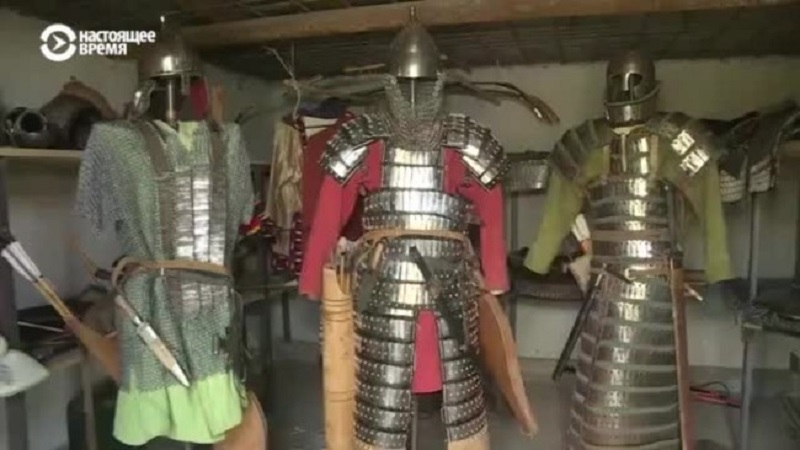Archaeology: the weapons of steppe nomads
An archaeologist in Almaty for the past 15 years has been collecting tools, weapons and ammunition of all the peoples who passed through the Central Asian steppes, from the Sakis to the Kazakhs. And now he has recently opened the "Nomad" ethnographic center, visited by many Kazakhs fascinated by the chance to reconnect with the lifestyle of their ancestors.
Almaty (AsiaNews) - An archaeologist from Almaty, the great city of southern Kazakhstan, Stanislav Potapov, has published the results of his research and many excavations in the region, in which he was able to distinguish the types of weapons and various objects of the ancient nomads, who moved from the Asian steppes to the more attractive European plains.
From being a simple professor of history, Potapov gradually became engrossed in a passion for the evidence of the remotest past, setting out to study the traditions of horse and foot combat, which aroused the extraordinary military art of the Tatars and Cossacks at various times. For the past 15 years, the archaeologist has been collecting tools, weapons, and ammunition of all the peoples who passed through the Central Asian steppes, from the Sakis to the Kazakhs.
As a boy, Stanislav loved every variation of fencing, but he never thought it would become the main focus of his professional activities. That is, until he was able to participate with some of his colleagues in a very fortunate archaeological expedition, during which a large, well-preserved bronze plaque was found with the image of a Kangju warrior on it, an ancient population that had managed to unite several nomadic tribes in Central Asia, becoming for a couple of centuries the second power in Transoxiana after the Yuezhi.
Based on this discovery, research took a very intense turn, and the leather armor of the Saki and the iron armor of the Sarmatians also came to light. As Potapov explains, "the big difference between these pieces of equipment lay in their cost, which distinguished the Kongju, Kazakh and other warriors, and especially enhanced the figures of the leaders, whose armor was decorated, even with gold and silver details." Especially belts were embellished, the Turks preferring gold and the Kazakhs silver; the decorations to a great extent have been erased by time, but the materials are still in perfect condition.
Arranging the found armor proved to be a particularly delicate and expensive task, to be organized together with the National Museum of Kazakhstan, involving many experts and consultants in various historical and archaeological fields, as well as craftsmen in the art of forging.
Potapov's plans were enthusiastically supported by an entrepreneur, Zhandos Nurbekov, who has also been very attracted to local ancient history since his early youth. After succeeding in completing the first full set of equipment, the decision was made to open a real Nomad ethnographic center, which was recently inaugurated, allowing visitors to take a trip back in time, moving across the boundless steppes as they did in ancient nomadic times.
"At first we thought the facility would attract foreign tourists more than anything else, at most with educational tours for students," Nurbekov says, "and indeed this was the case, until operators, artisans and ordinary Kazakh citizens became involved, who were increasingly fascinated by the possibility of reconnecting with the very lifestyle and spirit of our ancestors.
Thanks to this initiative, in times of super-tech tanks and supersonic missiles, it has become a fashion in Kazakhstan to make home-made arrows of 40 grams each, like those found in excavations, perhaps only in plastic for the children to play with, or to decorate walls.
Potapov has also opened an "old-fashioned" fencing school next door to the Nomad Center, to teach history not only through theory, but also through the practice of arts and cultures of the past, in the hope that they will teach something for the present as well.
02/11/2021 09:42
31/07/2023 19:01
13/01/2021 17:00
10/12/2019 09:17
07/10/2021 09:20







.png)










